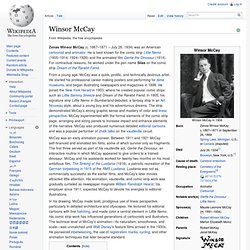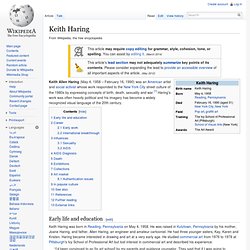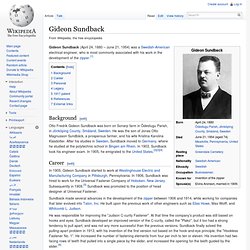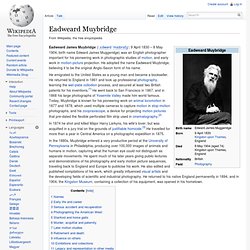

Auguste Rodin. François-Auguste-René Rodin (12 November 1840 – 17 November 1917), known as Auguste Rodin (/oʊˈɡuːst roʊˈdæn/ oh-GOOST roh-DAN; French: [oɡyst ʁɔdɛ̃]), was a French sculptor.

Although Rodin is generally considered the progenitor of modern sculpture,[1] he did not set out to rebel against the past. He was schooled traditionally, took a craftsman-like approach to his work, and desired academic recognition,[2] although he was never accepted into Paris's foremost school of art. Sculpturally, Rodin possessed a unique ability to model a complex, turbulent, deeply pocketed surface in clay. Many of his most notable sculptures were roundly criticized during his lifetime. They clashed with the predominant figure sculpture tradition, in which works were decorative, formulaic, or highly thematic. Biography[edit] Formative years[edit] Rodin was born in 1840 into a working-class family in Paris, the second child of Marie Cheffer and Jean-Baptiste Rodin, who was a police department clerk.
Winsor McCay. Zenas Winsor McCay (c. 1867–1871 – July 26, 1934) was an American cartoonist and animator.

He is best known for the comic strip Little Nemo (1905–1914; 1924–1926) and the animated film Gertie the Dinosaur (1914). For contractual reasons, he worked under the pen name Silas on the comic strip Dream of the Rarebit Fiend. McCay was an early animation pioneer. Between 1911 and 1921 McCay self-financed and animated ten films, some of which survive only as fragments. The first three served as part of his vaudeville act, Gertie the Dinosaur, an interactive routine in which McCay appeared to give orders to a trained dinosaur. Alan Turing. Alan Mathison Turing, OBE, FRS (/ˈtjʊərɪŋ/ TEWR-ing; 23 June 1912 – 7 June 1954) was a British mathematician, logician, cryptanalyst, philosopher, pioneering computer scientist, mathematical biologist, and marathon and ultra distance runner.

He was highly influential in the development of computer science, providing a formalisation of the concepts of "algorithm" and "computation" with the Turing machine, which can be considered a model of a general purpose computer.[2][3][4] Turing is widely considered to be the father of theoretical computer science and artificial intelligence.[5] During World War II, Turing worked for the Government Code and Cypher School (GC&CS) at Bletchley Park, Britain's codebreaking centre. For a time he led Hut 8, the section responsible for German naval cryptanalysis. After the war, he worked at the National Physical Laboratory, where he designed the ACE, among the first designs for a stored-program computer. Howard Carter. Howard Carter (9 May 1874 – 2 March 1939) was an English archaeologist and Egyptologist who became world famous after discovering the intact tomb of 14th-century BC pharaoh Tutankhamun (colloquially known as "King Tut" and "the boy king").

Early life[edit] Howard Carter was born in London, the son of Samuel Carter, an artist, and of Martha Joyce Carter. His father trained and developed Howard's artistic talents. Howard Carter spent much of his childhood with relatives in the Norfolk market town of Swaffham, the birthplace of both his parents.[1][2] In 1891 the Egypt Exploration Fund (EEF) sent Carter to assist Percy Newberry in the excavation and recording of Middle Kingdom tombs at Beni Hasan. Although only 17, Carter was innovative in improving the methods of copying tomb decoration.
In 1899, Carter was appointed as the first chief inspector of the Egyptian Antiquities Service (EAS). Tutankhamun's tomb[edit] Later work and death[edit] The Grave of Howard Carter. Keith Haring. Keith Allen Haring (May 4, 1958 – February 16, 1990) was an American artist and social activist whose work responded to the New York City street culture of the 1980s by expressing concepts of birth, death, sexuality and war.[1] Haring's work was often heavily political and his imagery has become a widely recognized visual language of the 20th century.

Gideon Sundback. Gideon Sundback (April 24, 1880 – June 21, 1954) was a Swedish-American electrical engineer, who is most commonly associated with his work in the development of the zipper.[1] Background[edit]

Eadweard Muybridge. In 1874 he shot and killed Major Harry Larkyns, his wife's lover, but was acquitted in a jury trial on the grounds of justifiable homicide.[3] He travelled for more than a year in Central America on a photographic expedition in 1875.

In the 1880s, Muybridge entered a very productive period at the University of Pennsylvania in Philadelphia, producing over 100,000 images of animals and humans in motion, capturing what the human eye could not distinguish as separate movements. He spent much of his later years giving public lectures and demonstrations of his photography and early motion picture sequences, traveling back to England and Europe to publicise his work. He also edited and published compilations of his work, which greatly influenced visual artists and the developing fields of scientific and industrial photography.